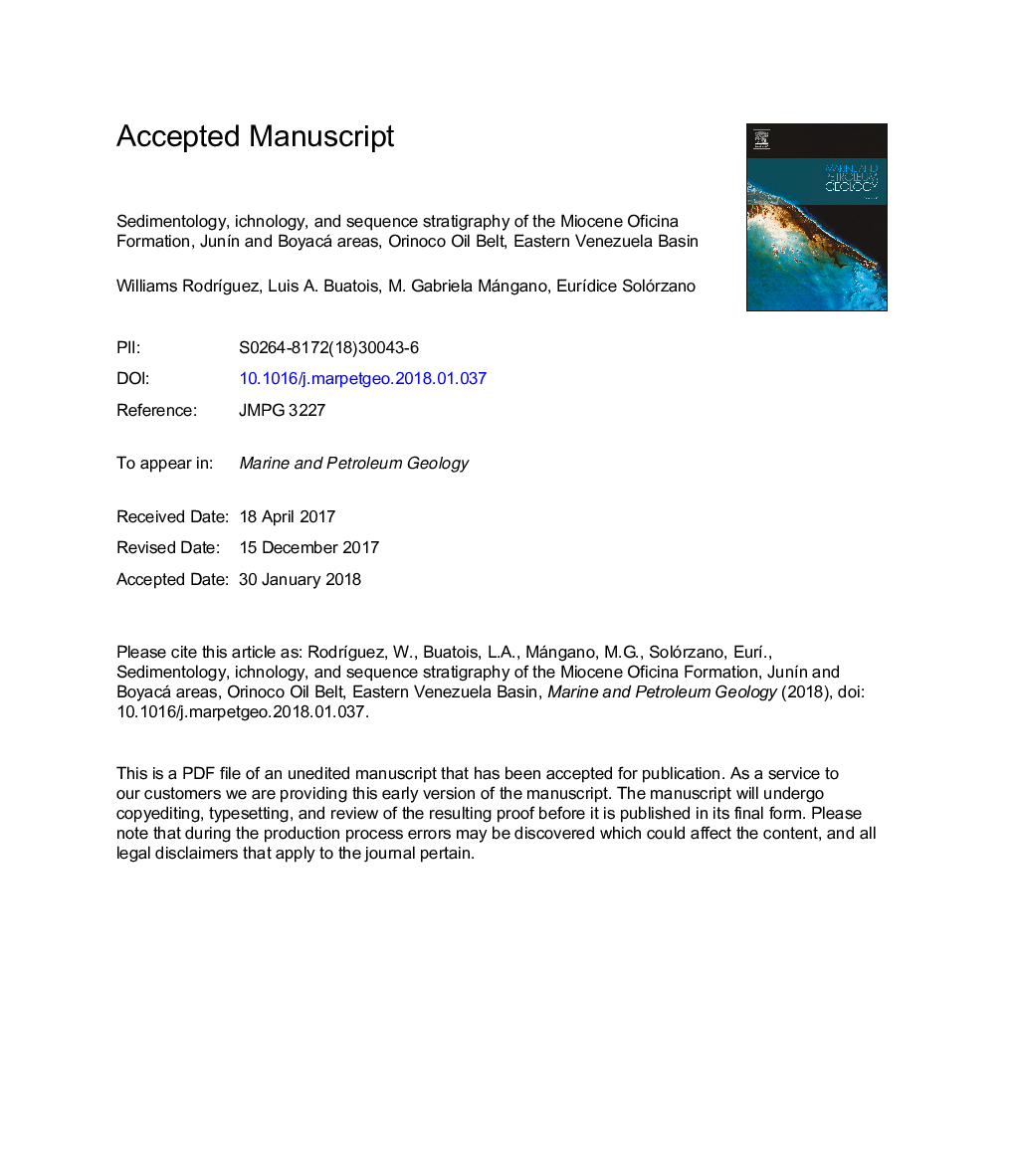| Article ID | Journal | Published Year | Pages | File Type |
|---|---|---|---|---|
| 8909115 | Marine and Petroleum Geology | 2018 | 72 Pages |
Abstract
The Miocene Oficina Formation is widely distributed in the subsurface of the Orinoco Oil Belt of eastern Venezuela. Despite its economic importance as one of the most important hydrocarbon reservoirs worldwide, little is known about its sedimentologic, ichnologic and sequence-stratigraphic aspects. Sedimentary facies, trace fossils, depositional environments, stratal stacking patterns and surfaces of sequence-stratigraphic significance have been analyzed in the JunÃn and Boyacá areas. The Oficina Formation is subdivided here into three informal members: lower, middle, and upper. The lower member consists mainly of lowstand fluvial braided-channel deposits filling an incised valley. No evidence of marine conditions is present and the only biogenic structures detected are root trace fossils present at the top of a few fining- and thinning-upward channelized units. The middle member is much more heterogeneous, both vertically and laterally, comprising high-sinuosity estuarine-channel, tidal-flat, tidal-creek and tidal-sandbar deposits, stacked to form a retrogradational package and representing the transgressive systems tract. The middle member is characterized by widespread evidence of tidal influence (e.g. inclined heterolithic stratification) and by the presence of the impoverished Cruziana Ichnofacies and the Skolithos Ichnofacies, both reflecting brackish-water conditions. This member is thought to represent deposition in an estuarine system. The upper member consists predominantly of highstand delta-plain deposits, stacked forming a progradational pattern. These deposits locally show intense bioturbation with a predominance of continental trace fossils, illustrating the Scoyenia Ichnofacies. Deltaic deposits display a mixed influence of tides and river processes. Previous studies invariably assumed a deltaic model for the whole Oficina Formation. However, integration of sedimentologic, ichnologic, and sequence-stratigraphic datasets suggests a more complex depositional evolution, comprising a fluvio-estuarine valley incised during a relative sea-level fall that became filled during the lowstand and subsequent transgression, culminating with deltaic progradation during the highstand.
Related Topics
Physical Sciences and Engineering
Earth and Planetary Sciences
Economic Geology
Authors
Williams RodrÃguez, Luis A. Buatois, M. Gabriela Mángano, EurÃdice Solórzano,
